What caused the issues with 5G rollout?
What caused the issues with 5G rollout? This week’s news is rife that 5G towers and the rollout of a certain broadband width may have an adverse effect on aircraft safely landing in the USA. Emirates, Air India, and British Airways are just a few of the airlines that have halted their operations to fly to the United States.
As I am sure you are aware 5G is becoming part of our everyday lives when using technology – in the UK we have had access to 5G since 2019 but its inconsistent rollout means that we haven’t got it everywhere yet. The same goes for the US, their rollout has been sporadic and now they are facing even more delays. But why?
Some of USA’s 5G networks operate between the frequencies of 3.7Ghz and 3.98GHz. This could be somewhat problematic due to the Radio Altimeter using frequencies between 4.2 and 4.4GHz. The separation guard band is only 0.2GHz which could potentially impede on the safety of aircraft operations close to the ground.
As we alluded to earlier, 5G isn’t new technology and in fact, some countries have rolled out this new cellular broadband with little to no implications on aircraft. France for example boasts a successful rollout, and this is how they did it:
- There is a buffer around the airport that allows for 96 second of flight undisturbed by potential 5G tower frequencies.
- France’s 5G uses frequencies 2.1GHz to 3.5 GHz increasing the separation guard band, it is also not as powerful as the Americans, in fact, the USA 5G power is 2.5 times more powerful.
- In France, the antennas on the 5G towers are tilted downwards as it limits harmful interference with the approaching aircraft.
The USA and FAA published a delay to the 5G rollout earlier this month whilst resolutions were being investigated. However, as of 19th January, the two weeks are up and NOTAMs are being issued across the states not authorizing Cat II/ Cat III / Autoland procedures which as you can imagine in the depths of winter in North America poses somewhat a challenge.
If it is enough of a risk to stop some of the biggest carriers, why haven’t all planes stopped flying the transatlantic routes?
Simply put, not all of America is affected. Like many other countries, rolling out 5G has been intermittent, some places have had it for years and others are only just getting used to 4G. Airports in places where 5G hasn’t yet been rolled out, such as Denver International Airport and Ronald Reagan Washington Airport are more than safe to operate to and from.
The equipment on the aircraft that is most affected by 5G frequencies, is the radio altimeter. This instrument is vital for operating very close to the ground or terrain, in fact, it can only be used when you are within 2500ft of the surface. Approach and landing are the most complex and mentally demanding phases of the flight, that combined with the lack of trust in your instrument is only going to elevate the already sky-high figure which is more than 60% of incidents occur in those last few minutes of flight. It is more than safe to fly at altitude over these towers as aforementioned, you do not require your radio altimeter till you are intending to land.
The United States, FAA, and the telecommunication companies also worked out some temporary solutions during the two-week delay where there was a restriction on the antenna operation areas close to key airports. The 5G transmitters were supposed to switch on on the 5th of January but for the last two weeks, there has been a theoretical buffer implemented around the key airports. The FAA have now released those 50 airports that will continue with these buffer zones for the next 6 months, whilst the telecommunication companies devise a safer more robust rollout plan. The FAA has also said that aircraft will not be allowed to complete low-visibility operations unless they have not got a proven accurate and reliable altimeter that works within the US 5G band environment.
As the days and weeks go on, we hope that the issues regarding the rollout of the new bandwidth is quashed and that transatlantic flights can continue to land in the US safely as before – for a repeat of Wednesday 19th January where chaos caused fear and more cancellations of flights, could further set back the recovery of the airline industry.
Why is my flight delayed in foggy weather?
Why is my flight delayed in foggy weather? It sometimes surprises visitors to an airport tower just how visual the job is. Controllers in the Visual Control Room are physically looking at the aircraft they’re guiding, with minimal use of radar. The clue is in the name, I suppose!
But during periods of bad weather such as fog, like parts of the UK are experiencing today, the rest of the airport can become completely invisible from the tower.
In these circumstances control has to switch to radar and ‘low visibility procedures’ to ensure airport operations can continue safely. These special procedures cover aircraft on approach and departure, as well as movements on the ground.

A foggy Gatwick Airport by zzathras777 via Flickr
In foggy conditions, aircraft use the Instrument Landing System (ILS) at the airport to be automatically guided to the runway – they are effectively following the ILS beam all the way to touch-down. It is therefore important that we protect the beam from any interference, such as from other aircraft on the runway.
This means spacing between aircraft has to be increased, with an aircraft having to touch-down and taxi far enough away from the runway such that it no longer interferes with the ILS beam before the next one can be given landing clearance. Typically this means the spacing between aircraft has to increase by up to 50%.
Aircraft are also more widely spaced when manoeuvring or taxiing, whether they’re arriving or departing.
All this takes extra time, effectively taking capacity out of the airport with the end result often being delays to passengers sitting in the terminals.
Whenever there’s bad weather we work very closely with airlines and airport operators to handle safely as many flights as possible and minimise the disruption.
As ever, if you’re concerned about the effect bad weather might have on your flight, you should contact your airline which will be able to provide you with the latest information.
What happens when a plane gets struck by lightning?
What happens when a plane gets struck by lightning?: You might have read the story of Virgin Airways flight VS65 which was hit by lightning last Wednesday, just 10 minutes after departing Gatwick Airport on its way to Montego Bay…
Aircraft are hit by lightning far more frequently than you might think and, although this could cause serious damage and result in lengthy delays, most of the time it goes completely unnoticed.
Thanks to the design and structure of modern aircraft, lightning strikes tend to be ‘over in a flash’ and have no serious consequences. But, when a pilot needs to land because of significant damage, air traffic control plays a pivotal role in managing the flow of aircraft through our airspace and getting them back to ground safely.
If a pilot suspects that the aircraft has been hit by lightning and believes that damage has occurred, they will contact air traffic control and tell us that they need to return to the nearest airport. Where the pilot has declared an emergency, he will be given a priority approach.
Our controllers are used to this kind of disruption to air traffic and pilots are no stranger to a ‘go-around’ – often caused by an infringer flying in controlled airspace without permission, or heavy winds!
Dealing with bad weather is one of the most difficult things for air traffic controllers to manage. Its unpredictable nature means aircraft aren’t able to fly their usual routes, resulting in unusual flight patterns that add hugely to the complexity of the airspace and the workload for each controller.
However, the training our air traffic controllers receive ensures that even the most disruptive events are safely managed!
View more of our blog posts with interesting views and news stories on the aviation industry, pilot training and more.
FEAR OF FLYING – GUIDE TO TURBULENCE
FEAR OF FLYING – A PILOT’S GUIDE TO TURBULENCE: There are different types of turbulence, mainly from rapid changes in wind direction and strength, which make the aeroplane accelerate, decelerate, or move side to side. It’s these movements, sometimes several at once, that can be uncomfortable whilst flying as a passenger, make it harder to drink your gin and tonic, read your magazine, or from my end – do my inflight paperwork! An aircraft is designed to be stable, meaning if turbulence forces the plane from its original path, it is designed to return to its previous straight, level flight without any positive control from the pilots. For most of the duration of the flight, the autopilot is flying the aircraft, and its job to keep the aircraft flying the way the pilots have commanded it to, even after being disrupted by any turbulent air. The main sensation during turbulence is the aircraft climbing or descending, potentially resulting in a feeling in your stomach similar to that you get from driving over a hidden dip in the road.
IF YOU DISLIKE THE SENSATION OF FLYING DURING TURBULENCE, SIT OVER THE WINGS OF THE AIRCRAFT.
The feeling of climbing or descending initially is the result of the turbulence, followed by the opposing direction as the aircraft reacts to it. These changes feel more drastic when sitting at the rear of the aircraft, as whilst the aircraft begins to climb, the tail moves downward and you will have the unusual sensation of being pulled out of your seat. If you sit over the wing, the aircraft pitches around its centre axis, resulting in a smaller sensation of movement as a passenger.
The aircraft will rarely change altitude by any more than 50 feet, which honestly is insignificant in proportion to its cruising level of around 37,000ft. Although to some it may feel that way, I promise that the aircraft isn’t falling out of the air, and the change of wind direction is never great enough to result in the aeroplane to stop generating its lift that it creates to fly! Although the sensation can be unsettling, passenger aircraft are built to withstand turbulence, and every pilot completes training in how to recognise the signs of turbulence and avoid it when possible, and how to make the flight as comfortable as possible for the passengers. There are 4 main types of turbulence:- Clear Air Turbulence- Thermal (associated with clouds, especially those big fluffy cumulous clouds you see on a hot day!)- Mechanical (caused by the airflow over physical features, mountains, buildings, trees)- Wake turbulence (caused by other aircraft generating lift, the larger the aircraft, the larger the wake)
Clear Air Turbulence
This type of turbulence is caused by changes in the wind at high level, although high winds may not indicate turbulence. An increase or decrease of wind strength, entering or flying through a jetstream, or a change in temperature, can all create CAT. Although our weather radar cannot display areas of this type of turbulence, CAT can be predicted in our preflight preparations by studying the forecast windshear, areas of jetstreams and pilot reports. We’ll do our best to avoid any turbulence if possible, and other pilots are often helpful in recommending if the area they are flying in is bumpy or smooth. Sometimes unfortunately, we’ll just have to wait until it stops, but we have the option to climb or descend if we know that the area around us will be more comfortable.
Thermal Turbulence
I initially learned how to fly in gliders; as I flew without an engine I would look to stay in areas of hot, rising air to stay airborne for as long as possible. A good indication of an area of thermals were large, cauliflower cumulous clouds, which are formed by moist, unstable air rising faster than the area surrounding it. As the moisture condenses, the air becomes stable and eventually stops rising. When entering a cloud, we fly through this rising air, which often causes a short period of turbulence. As the aircraft I currently fly is larger and flies faster than a glider, the result is often a couple of bumps until the plane leaves the offending cloud! Imagine driving over a speed bump on a bicycle compared to going 70mph in a car, the result is exactly the same whilst flying. In the cruise we are flying at around speeds of 500mph, resulting in that small bump appearing to be more dramatic than it is in reality! Generally speaking, there are fewer clouds the higher you fly, although the faster you fly the turbulence may seem more pronounced. Whilst flying, we use a weather radar that detects the water particles in the air, with a colour code to indicate the density and turbulence associated with the clouds ahead. We use this radar to avoid any larger, cumulonimbus clouds which also indicate thunderstorms, and communicate with Air Traffic Control to ensure that we maintain a safe distance from the unstable, rising and descending air surrounding the storm.
Mechanical Turbulence
This type of turbulence is caused by the airflow moving around a large object, a mountain like in Gibraltar, or a large building close to the runway. Landing at my home base in Dublin can sometimes be a little bumpy when the wind is coming over the nearby Wicklow Mountains, or London Gatwick can be affected by wind changing direction around a hangar near the runway. Unfortunately, there’s not a lot that we can do whilst flying to these destinations, although we are often familiar and comfortable with this type of turbulence, and as it’s always forecast we can prepare prior to experiencing it!
Wake Turbulence
Wake turbulence is a created by the airflow over an aircraft’s wing that also enables it to generate lift and fly, and the chances of us experiencing wake turbulence whilst flying are very small thanks to our colleagues in Air Traffic Control. ATC ensure thatwe are at a safe distance from any aircraft that may affect us with their own turbulence. There are rules and regulations that both pilots and ATC follow regarding the distance from another aircraft, especially between larger and smaller aircraft, (an Airbus A380 is in its own category!), ensuring that there is a safe period of time between departing aeroplanes. Although turbulence is uncomfortable and inconvenient, the pilots and the aircraft are more than capable of dealing with what nature throws our way! Ensure when you’re flying you keep your seatbelt on (like the pilots always do) in case your flight does encounter any unexpected bumps, but try to relax and appreciate that although it may not feel that way, the aircraft is still in controlled flight and is built to withstand more than 50% of the worst forces that turbulence may throw its way. Captain Sullenburger recommends that prior to a flight close your eyes as a passenger in a car and make note of the frequency and intensity of every vibration, jolt and noise. The car journey is likely to be much more turbulent than your average flight, and statistically, the drive to the airport is much more dangerous than flying in a commercial airliner! Do you have any other fears or concerns whilst flying? Comment below and I’ll aim to answer any queries as part of my new Fear of Flight series.
What is an Air Operators Certificate?
What is an Air Operators Certificate? An Air Operator Certificate (AOC) is a certificate authorizing an operator to carry out specified commercial air transport operations. (ICAO Annex 6)
Description
An air operator certificate (AOC), sometimes alternatively described as an Air Operator Permit (AOP), is the approval granted from a national aviation authority (NAA) to an aircraft operator to allow it to use aircraft for commercial purposes. This requires the operator to have personnel, assets and systems in place to ensure the safety of its employees and the general public. This document will as a minimum detail the aircraft types which may be used, for what purpose and in what geographic region.
“… prior to commencing commercial air operations, the operator shall apply for and obtain an air operator certificate (AOC) issued by the competent authority.” (IR-OPS ORO.AOC.100 Application for an air operator certificate)
An operator shall not operate an airplane for the purpose of commercial air transportation otherwise than under, and in accordance with, the terms and conditions of an Air Operator Certificate (AOC). (EU-OPS 1.175 (a))
IR-OPS ORO.AOC (EU-OPS 1.175) details the general rules for Air Operator Certification.
An AOC specifies the:(a) Name and location (principal place of business) of the operator;(b) Date of issue and period of validity;(c) Description of the type of operations authorised;(d) Type(s) of aeroplane(s) authorised for use;(e) Registration markings of the authorised aeroplane(s) except that operators may obtain approval for a system to inform the Authority about the registration markings for aeroplanes operated under its AOC;(f) Authorised areas of operation;(g) Special limitations; and(h) Special authorisations/approvals e.g.:
- CAT II/CAT III (including approved minima)
- MNPS
- ETOPS
- RNAV
- RVSM
- Transportation of Dangerous Goods. (IR-OPS SPA.DG), (Appendix 1 to EU-OPS 1.175)
Categories
AOCs can be granted for one or more of the following activities:
- Aerial surveying
- Aerial spotting
- Agricultural operations
- Aerial photography
- Aerial advertising
- Firefighting
- Air ambulance or aeromedical
- Flight Training
- Charter
- Public transport
Requirements
The requirements for obtaining an AOC vary from country to country but are generally defined as:
- Sufficient personnel with the required experience for the type of operations requested,
- Airworthy aircraft, suitable for the type of operations requested,
- Acceptable systems for the training of crew and the operation of the aircraft (Operations Manual)
- A quality system to ensure that all applicable regulations are followed,
- The appointment of key accountable staff, who are responsible for specific safety-critical functions such as training, maintenance, and operations,
- Carriers Liability Insurance (for Airlines) – Operators are to have sufficient insurance to cover the injury or death of any passenger carried.
- Proof that the operator has sufficient finances to fund the operation
- The operator has sufficient ground infrastructure, or arrangements for the supply of sufficient infrastructure, to support its operations into the aerodromes requested.
The certificate is held by a legal person who resides in the country or region of application (for EASA)
International variations
An AOC is referred to as an Air Carrier Operating Certificate in the USA.
























